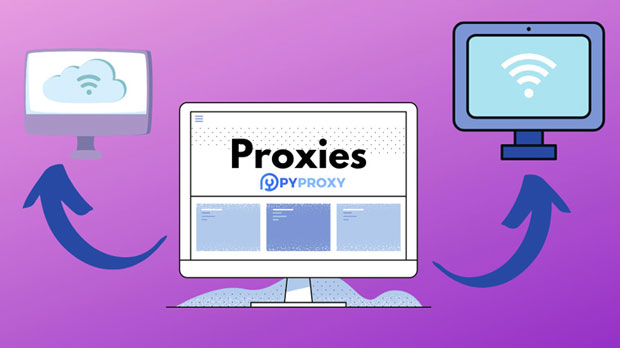In today's digital landscape, the need for efficient and scalable automated account management is growing rapidly. Many businesses, especially e-commerce and social media platforms, need to manage hundreds or even thousands of accounts simultaneously. However, managing accounts in bulk poses significant challenges, particularly when it comes to avoiding detection and blocking by websites or platforms. This is where static ISP proxies come into play. They offer a reliable and secure solution, ensuring smooth automation by providing stable, consistent IP addresses that mimic real user activity. Without static ISP proxies, automated account management would be prone to disruptions, account bans, or throttling. This article delves deep into why static ISP proxies are indispensable for automated account management, exploring their key benefits and applications. The Role of Static ISP Proxies in Automated Account ManagementAutomated account management involves using bots, scripts, or other automation tools to handle multiple accounts simultaneously. This is particularly useful for tasks such as:- Account registration- Mass login/logout procedures- Content posting and updates- Automated responses and interactionsHowever, websites are increasingly sophisticated in detecting and blocking automation. Techniques like CAPTCHA challenges, IP blocking, and bot detection algorithms are used to identify and restrict automated behaviors. Static ISP proxies provide a way to bypass these barriers by offering stable, real user IPs that websites are less likely to flag.Understanding Static ISP ProxiesBefore delving into why static ISP proxies are essential for account management, it's important to understand what they are. An ISP Proxy refers to an IP address provided by an Internet Service Provider (ISP) rather than a data center. Unlike data center proxies, which may appear suspicious to websites due to their large-scale usage, ISP proxies resemble regular user traffic because they come from actual ISPs.A static ISP proxy is an ISP proxy that maintains the same IP address over a long period, unlike rotating proxies that change IPs frequently. This consistency is crucial for automated account management because many websites track user behavior using IP addresses. When the IP address changes frequently, it can raise red flags and trigger security measures, disrupting the automation process.Key Benefits of Using Static ISP Proxies in Automation1. Enhanced Security and AnonymityOne of the primary advantages of using static ISP proxies in automated account management is the enhanced security and anonymity they provide. By using a proxy, the real IP address of the automation tools or users is hidden, making it harder for websites to trace activities back to the user. This prevents unauthorized access and ensures that automation remains undetected.2. Avoiding Account Bans and ThrottlingMany platforms, especially social media networks, implement anti-bot mechanisms designed to block or restrict suspicious activity. Frequent IP changes can trigger these systems, leading to account bans or throttling. Static ISP proxies help avoid these issues because they maintain the same IP address across multiple sessions. This consistency helps mimic normal user behavior, reducing the likelihood of account bans or restrictions.3. Better Success Rates for Automation TasksStatic ISP proxies provide more reliable and stable connections compared to dynamic or rotating proxies. This consistency ensures that automation tasks, such as posting, logging in, or making purchases, are completed without interruptions. With rotating proxies, the frequent IP changes can cause delays or errors in automation, leading to a lower success rate. Static ISP proxies ensure that tasks are completed smoothly without errors or interruptions.4. Improved User Experience SimulationWebsites are often designed to track and analyze user behavior. When using automated systems to manage accounts, it is important to simulate real human behavior to avoid detection. Static ISP proxies mimic the behavior of a single, consistent user by keeping the same IP address over time. This makes the automation appear more natural and reduces the chances of being flagged by the website's security systems.Applications of Static ISP Proxies in Automated Account Management1. E-commerce PlatformsFor businesses in e-commerce, automated account management is vital for handling large-scale product listings, orders, customer service interactions, and more. Static ISP proxies enable businesses to manage these tasks without triggering anti-bot measures, ensuring smooth operations and avoiding downtime.2. Social Media ManagementSocial media marketers often need to manage multiple accounts simultaneously, performing tasks like content posting, following/unfollowing users, liking posts, and responding to messages. Static ISP proxies allow marketers to automate these processes without risking account bans or throttling.3. Search Engine Optimization (SEO)In SEO, automation is often used for tasks like link building, competitor analysis, and keyword research. Static ISP proxies ensure that these activities can be performed on a large scale without attracting unwanted attention from search engines or other websites.4. Online GamingSome online games require players to manage multiple accounts for various purposes, such as resource farming or account trading. Static ISP proxies allow players to automate these tasks while avoiding detection by the game’s anti-bot systems.Why Static ISP Proxies Are Preferred Over Other Types of Proxies1. StabilityDynamic or rotating proxies often change IP addresses frequently, which can lead to issues such as failed logins, incomplete actions, or difficulty in maintaining session continuity. Static ISP proxies provide the stability needed for long-term automation tasks, making them more reliable than other types of proxies.2. Lower Risk of DetectionUnlike data center proxies, which are easily recognized due to their patterns, static ISP proxies use IPs that are associated with real ISPs, which makes them harder to detect. This reduces the chances of being flagged or blocked by websites, making them ideal for sensitive tasks like automated account management.3. Cost-EffectivenessWhile static ISP proxies may come at a slightly higher price than other types of proxies, they offer long-term value due to their stability and reliability. This makes them a cost-effective solution in the context of automated account management, where efficiency and uptime are critical.Challenges and Considerations When Using Static ISP Proxies1. Limited AvailabilityWhile static ISP proxies are beneficial, they can sometimes be harder to obtain compared to rotating proxies. They are often provided by premium proxy services, which may limit access for users with lower budgets.2. Risk of OveruseSince static ISP proxies rely on a fixed IP address, they can be overused if many automated systems rely on the same proxy. This can lead to potential detection if the same IP is used excessively. It is important to manage the use of static ISP proxies carefully to avoid overloading them.3. Compliance with Terms of ServiceMany websites have strict terms of service that prohibit the use of proxies or automation tools. It is essential to ensure that using static ISP proxies does not violate the terms of service of the platforms being targeted.In conclusion, static ISP proxies are a critical component for successful automated account management. Their ability to maintain stable, consistent IP addresses makes them indispensable for businesses and individuals seeking to automate tasks on large scales while avoiding detection. By providing enhanced security, reliability, and reduced risk of bans, static ISP proxies allow for efficient and uninterrupted automation. Despite their higher cost and occasional availability challenges, they remain one of the best solutions for those seeking to manage accounts at scale while maintaining a low profile on the web.
Nov 13, 2025


































































